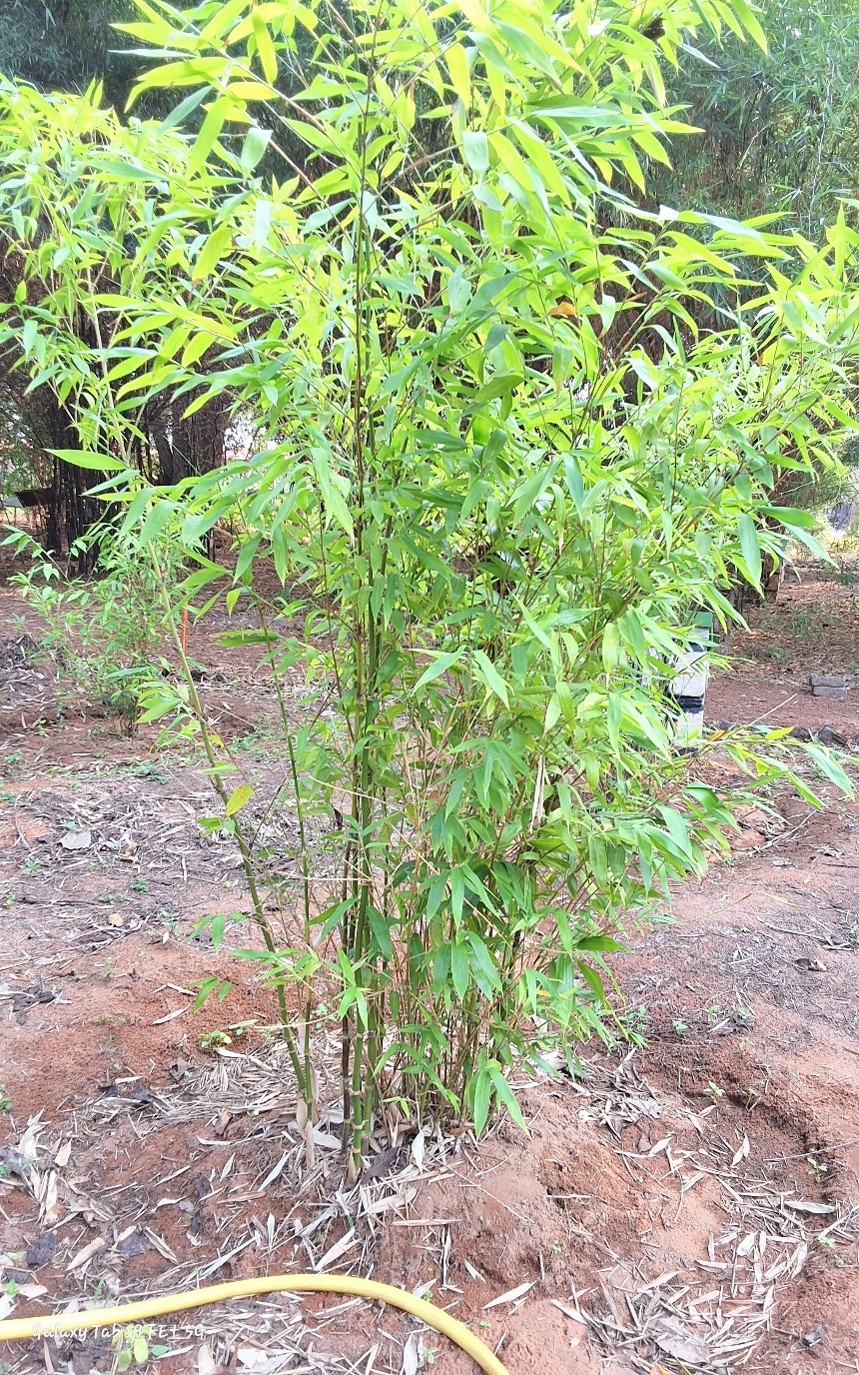Guadua angustifolia

Guadua angustifolia
Guadua angustifolia also known as Giant Thorny Bamboo or Guadua Bamboo, is a large, robust, and clumping bamboo species native to the tropical and subtropical regions of South America, particularly in Colombia, Ecuador, Peru, Brazil, and Venezuela. It thrives at altitudes ranging from 500 to 2,500 meters above sea level and is commonly found in rainforests and along riverbanks. This bamboo species is well-suited to well-drained, fertile soils, preferring loamy or clay loam types, and it tolerates slightly acidic to neutral soil pH (5.5 to 7).
Guadua angustifolia is characterized by its large, dense growth, with culms reaching heights of 20 to 30 meters and diameters ranging from 12 to 20 cm. The culms are yellowish-green to light brown, with a smooth surface. The internodes are 40 to 60 cm long, and the culm sheath is green when young, turning reddish-brown or yellow as it matures. The adaxial surface of the culm is smooth, while the abaxial surface is covered with dense, dark brown, appressed hairs. The margins of the sheath are ciliate.
The leaves of Guadua angustifolia are lanceolate, elongated, and pointed, measuring 15 to 30 cm in length and 2.5 to 5 cm in width. They have a glabrous texture on both sides, contributing to the bamboo's sleek appearance.
This bamboo species is widely recognized for its strength and flexibility, making it highly valued for construction, particularly in South America. Guadua angustifolia is commonly used to make structural beams, scaffolding, housing materials, and flooring. It is also used in the production of furniture, crafts, and paper. The bamboo's fibers are utilized for making ropes and textiles, while its edible shoots are consumed in certain regions.
The inflorescence of Guadua angustifolia consists of a large, pendulous panicle with numerous small flowers. The flowering glumes are small and bracteate, forming compact heads. The stamens have exserted anthers that are slightly hairy, while the pistil is small and inconspicuous. Guadua angustifolia has a rare flowering cycle, flowering infrequently every 40 to 50 years, with instances of flowering recorded in the wild in Colombia and Ecuador.
The bamboo produces small, wind-dispersed seeds, though seed viability is often low. Guadua angustifolia is commonly propagated through vegetative methods such as culm cuttings, which root easily. Clump division and tissue culture are also used for large-scale propagation, particularly in commercial nurseries.
In summary, Guadua angustifolia is an essential bamboo species widely used in construction and various other industries due to its strength, flexibility, and versatile applications. It plays a vital role in the economy and culture of South America and is also gaining popularity in other tropical regions worldwide.
Listen Audio:
Need assistance? BRTC Faculty